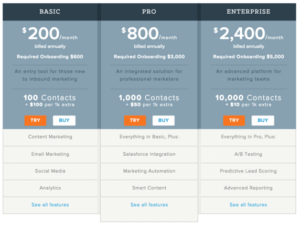7 Ways to Master Pricing Tiers for your Business

How you price your product or service can be as crucial as the product itself. One popular method that has proven effective across various industries is the use of pricing tiers. But what are they, and how can they benefit your business?
What are Pricing Tiers? According to the US Chamber of Commerce,
“Tiered pricing offers flexibility and scalability to your customers, while offering you opportunities to upsell different service levels for added revenue.”
https://www.uschamber.com/co/
Pricing tiers are a structured way of presenting different price points for a product or service, each offering varying levels of value or features. It’s a strategy that caters to a diverse customer base with different needs and budgets.
The Anatomy of Pricing Tiers
- Entry-Level Tier: This is the most basic version, often priced at the lowest point to attract maximum customers. It provides essential features suitable for beginners or those with minimal needs.
- Mid-Level Tier: A step up from the basic, this tier offers additional features and benefits, targeting customers who need more than just the essentials but aren’t looking for advanced features.
- Premium Tier: The top-tier, often with the highest price point, offers all the bells and whistles. It’s designed for customers who want the full range of features and are willing to pay a premium for it.
Benefits of Pricing Tiers
- Flexibility for Customers: Tiers cater to a broad audience, from budget-conscious customers to those seeking premium offerings.
- Increased Revenue: By offering a premium tier, businesses can cater to customers willing to pay more for advanced features.
- Clear Value Proposition: Each tier clearly defines what the customer gets, making the decision process more straightforward.
- Upselling Opportunities: Once a customer is familiar with the basic tier, they might consider upgrading to access more features.

Crafting Effective Pricing Tiers
- Understand Your Audience: Know who your customers are and what they value. This understanding will guide the features you include in each tier.
- Highlight the Differences: Ensure that the distinctions between each tier are clear and justifiable.
- Avoid Overwhelming Choices: Too many tiers can confuse customers. Stick to a clear, simple structure.
- Regularly Review: As your product evolves and the market changes, revisit your tiers to ensure they remain relevant and competitive.
Final Thoughts on Pricing Tiers Pricing tiers, when executed correctly, can be a game-changer for businesses. They provide clarity, choice, and value to customers while maximizing revenue opportunities for the company. As with any strategy, it’s essential to keep the customer’s needs at the forefront, ensuring that each tier offers genuine value. Remember, it’s not just about different price points; it’s about delivering varying levels of value that resonate with your target audience.

Start Your Own Pricing Tiers
with Selling Lane
Unlimited Free for Startups – or Upgrade for Only $25
No credit card needed to try, startups get the CRM free forever
Or get the discounted Business Max Plan for $75





